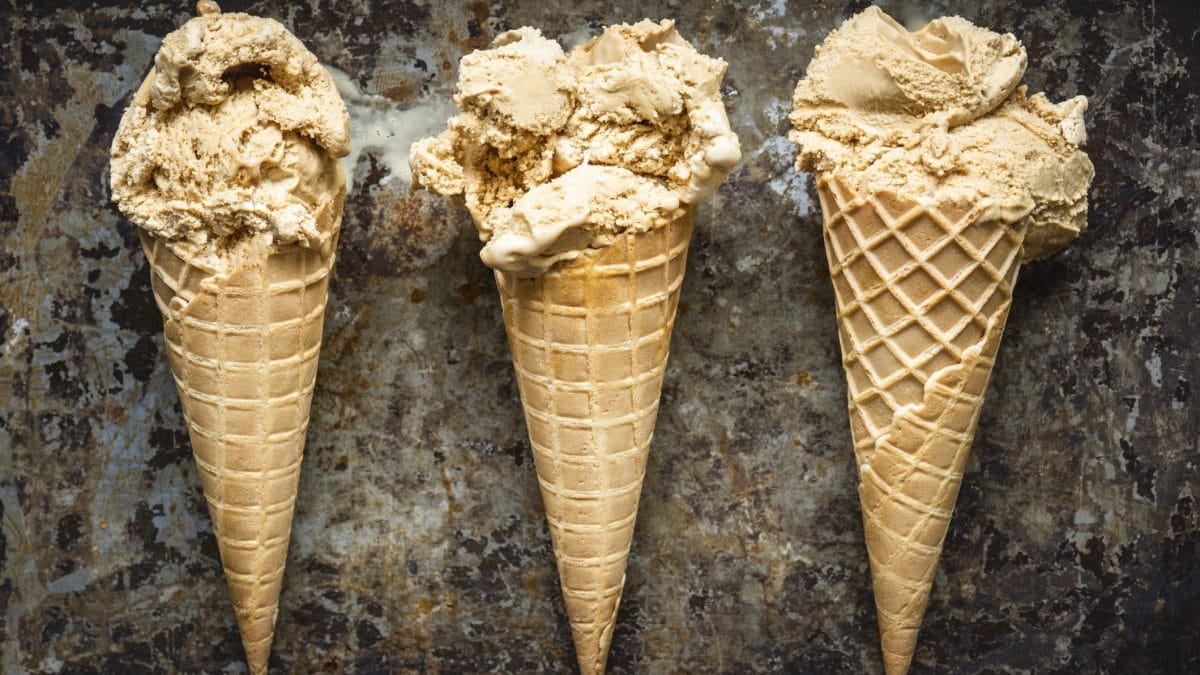
Some encounter it in a starred dish, others discover it in an unusual aperitif, and others, intrigued, try it at a gelateria, discovering that gelato is more than just a cone or cup. It is gastronomic or savory gelato, and we are talking about one of the most creative frontiers of Italian cuisine. Here, ingredients like meat, fish, vegetables, or cheese—thanks to surprising preparations—are served cold, but designed for hot dishes, and then transformed into tasting experiences. In recent years, this culinary language has increasingly gained space on the menus of great chefs and in the windows of signature gelato shops. In Italy, the home of contemporary gelato, there is a host of masters who have made this specialty a symbol of excellence. We met four of them, each with a unique approach but the same desire to amaze. In this article, we explain the history of gastronomic gelato, drawing on the voices of these master gelato makers, true specialists in the product.
The History of Gourmet Gelato
We can consider ice cream an evolution of granita, but with ancient and mysterious origins. The first historical traces are not sweet, but savory. Already at the Court of Versailles, before the French Revolution, cold preparations based on savory ingredients were served. We can even go back even further, to China during the Tang Dynasty (618-907), where recipes such as kumis existed, a fermented milk made with flour and camphor that was refrigerated. The practice of freezing milk and fruit is therefore ancient and common to many civilizations, including those of the Greeks, Romans, Sumerians, and Aztecs. According to Venetian records, Marco Polo imported, in the 14th century, cold desserts and frozen juices from China, where, as early as 2000 BC, a mixture of milk and rice cooked with spices and then solidified in snow was being prepared. For all these reasons, it could be said that ice cream first emerged as a savory treat and then as the one we know today.
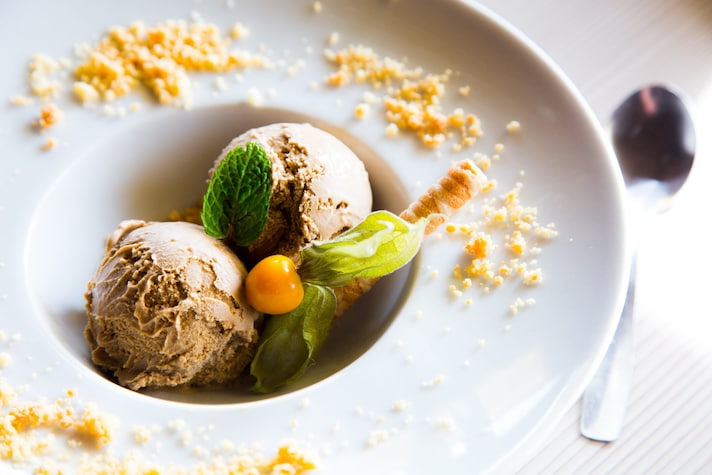
As for modern gastronomic gelato, we can date its birth to the International Gelato Exhibition in Longarone (1959 ). In the 1970s, master Enzo Vannozzi presented his "total gelato" with vegetables, aromatic herbs, and flowers. Subsequently, at the Sigep in Rimini, three professionals won a competition with creations such as a prawn cone with artichoke gelato, cod gelato, and foie gras biscuit with onion. It was Pino Scaringella, however, who perfected gastronomic gelato in the 1980s and 1990s , which today makes him considered the grand master of Italian savory gelato.
From Athletic Rigor to The Geometry of Flavor: Marco Radicioni's Gelato (Otaleg! – Rome)
Marco Radicioni is the first Italian master gelato maker to tell us why they invested in gourmet gelato, turning it into a world of excellence. With his gelateria Otaleg! in Trastevere (Rome), he has been ranked among the best gelato makers in Italy. He explains that his passion for gelato began by chance and remembers vividly the moment it blossomed. "I used to be an athlete, and when I had to prepare for competitions, I would even count the number of drops of water I drank. I remember that the most gratifying "slip-up" I ever had was gelato, because it was sweet, easy to swallow, delicious, and affordable. From there, it was a short step to making it a profession. Every passion I pursued became all-encompassing for me. First it was sport, then I became obsessed with gelato and its geometry."
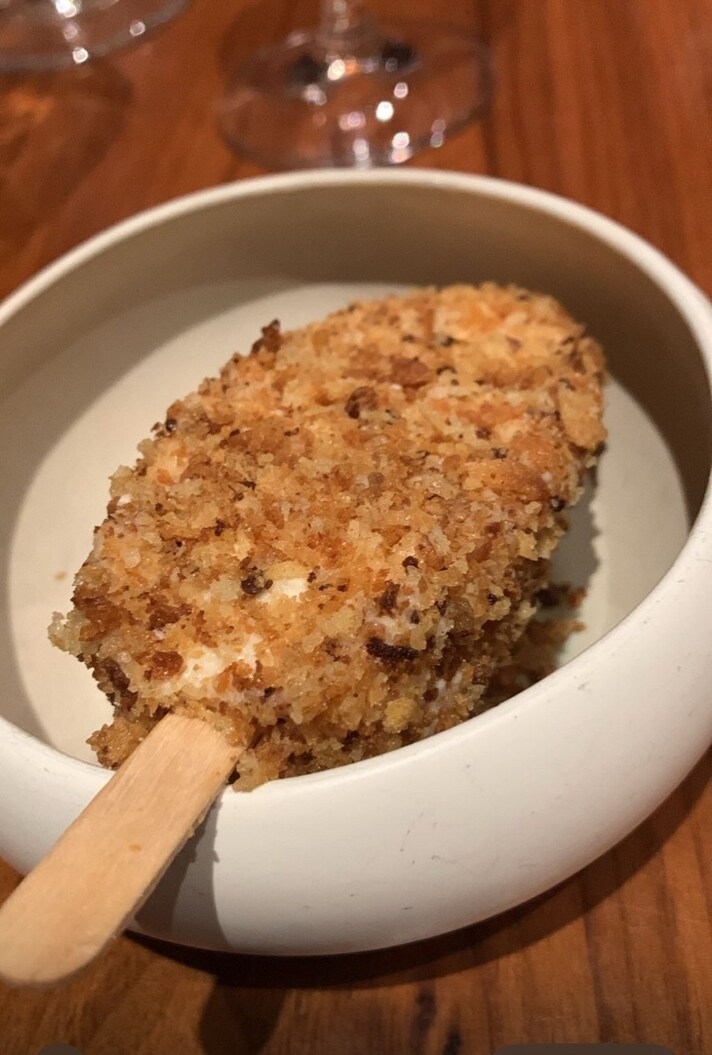
His first encounter with gourmet gelato came when, having put aside his sportsman's attire, he ran a reception business with two friends. "Conceiving gelato that would complement the dishes was natural," Radicioni explains. "I hadn't taken any professional courses or schools; for me, everything could be gelato, and I saw it in everything." The owner of Otaleg explained to us that gourmet gelato is a label that serves to separate it from dessert. "This product is a state of matter," he explains. "For years now, many restaurants have been offering gelato to pair with savory dishes. By assonance, I'd say cheeses are the easiest to pair, but today is the seafood season, so fish like meagre or swordfish pair with raspberries from the Cimini Mountains, blood peaches, and garden herbs."
Stefano Guizzetti, the Gelato Maker and Chemist Who Transforms Savory Into Cold (Ciacco Lab – Parma)
According to Stefano Guizzetti, scientist, chemist, and gelato maker at the experimental gelato shop Ciacco Lab in Parma and Milan, gastronomic gelato is much more than a culinary experiment. "It's a savory frozen preparation in which the ingredients used," he tells us, "are not sweet like in traditional gelato, but savory." His gelato shop stands out among the best in Italy, having been awarded three cones by Gambero Rosso and the prize for best gastronomic gelato. With a thesis on emulsifiers in gelato, later published in the journal Dairy Science, Guizzetti has made the fight against additives and daily scientific research the heart of his "gelato senz'altro" (gelato without a doubt).
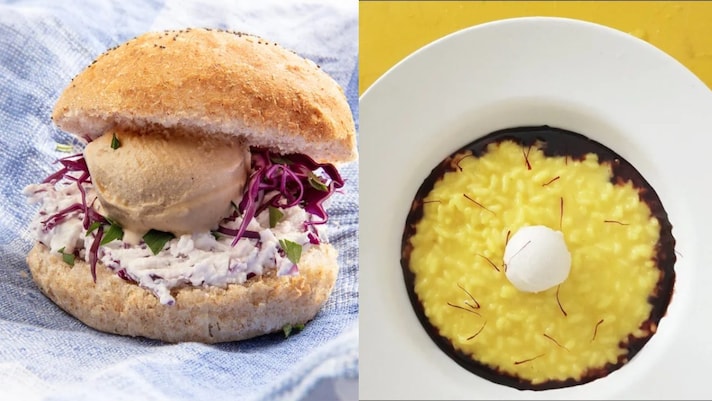
On the right: Yellow risotto with red wine reduction and marrow sorbet – Stefano Guizzetti (Ciacco Lab)
He told us that he favors evocative and authentic flavors, the result of slow preparations such as stew or ragù. "These flavors, even if they may not initially please everyone," he explains, "if contextualized in the right way, they become exceptional." The complexity of his work lies in two main technical challenges. "On the one hand," Guizzetti points out, "you have to be good at balancing sugars and saltiness; personally, I prefer a savory aftertaste. On the other, you have to know how to condition the ingredient, that is, cook it and treat it so that it transforms into gelato." Among his most notable creations are pork shoulder sorbet, ragù sorbet, and marrow sorbet. "Among my most successful and surprising experiments," the gelato maker confesses, "is a flavor obtained from the fat of oven-baked bones. We once served it on a yellow risotto deglazed with Barbera red wine: a contrast of intensity, a play of temperatures for the palate, and textures that produced an incredibly exceptional result." According to Guizzetti, gourmet gelato will become an increasingly important part of haute cuisine and high-end restaurants. "The more skilled and knowledgeable people work with gelato and include it in their menus, the more this sector will grow."
Dario Rossi's "Natural and Local" Gelato (Greed – Frascati)
Dario Rossi‘s gelato at Greed – Avidi di gelato (Frascati) is undoubtedly one of the best gourmet gelatos in Italy. "I believe this is a sector that's still underexplored," explains Rossi, "but it's full of potential and capable of inspiring emotions. Its savory nature is what sets it apart from traditional gelato." The menu ranges from cacio e pepe gelato to carbonara, to one with porchetta from the Castelli Romani, which he pairs with bergamot or Amalfi lemon to degrease and cleanse the palate.
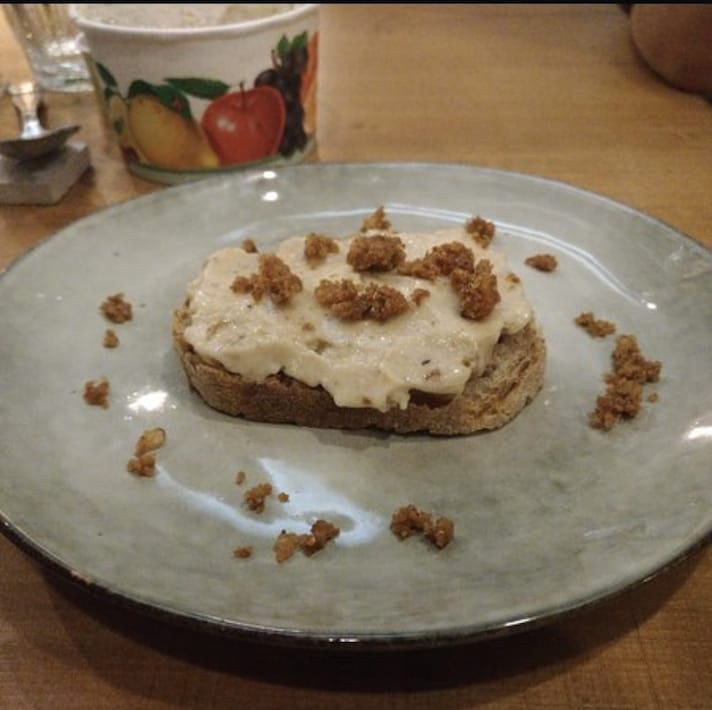
"I believe the real challenge lies in transforming an idea into gelato," says the gelato maker. "First, you start by tasting a product and then you mentally imagine what the recipe and the final result might be. Once the flavor is defined, you need to combine the ingredients while maintaining a sequence of tasting sensations." An example could be the "Fior di Mare" gelato, which won the Gambero Rosso award for best gastronomic gelato in Italy in 2017, which is a "journey in three acts." It begins with the intense and enveloping sheep's milk ricotta, followed by the vegetal lightness of the zucchini blossom, and finally the marine flavor of the anchovy. "This last element brought back childhood memories of going to the port of Sapri to watch the fishing boats return. Creating this balance of sensations is, in my opinion, the most complex technical challenge."
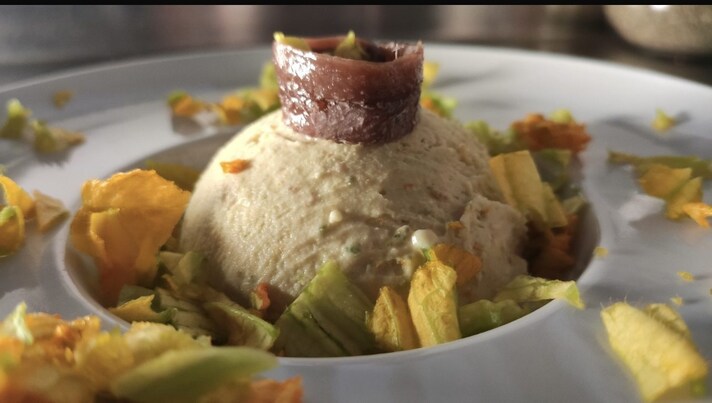
Among the most successful and surprising pairings, Rossi cites mortadella. "I couldn't find a suitable pairing, then I remembered the Roman pizza bianca I used to eat as a boy," explains Dario Rossi. "I served mortadella ice cream on small squares of pizza bianca: the incredulous and pleased looks of the customers are still etched in my memory."
From the Sea to The Gelato Cone With Pina Molitierno (La Fenice – Caserta)
Experienced gelato maker Pina Moliterno takes the conversation back to its origins. "Gourmet gelato was born decades ago," she explains. "There were many ‘enlightened' chefs who wanted to amaze with something new. It's not just regular gelato with a little salt. It requires study and a deep understanding of raw materials, sugars, and how to blend them for a creation that can offer unexpected sensory experiences." With her artisanal gelato shop "La Fenice" in Caserta, Pina Moliterno has elevated gourmet gelato to a level of excellence, explaining that, to be able to do it, there's a playful aspect that combines with the technical. "It's fun to create something unexpected," she says. "When a customer appreciates a roasted pepper or Tropea onion gelato, the satisfaction is enormous and it means you're doing your job well."
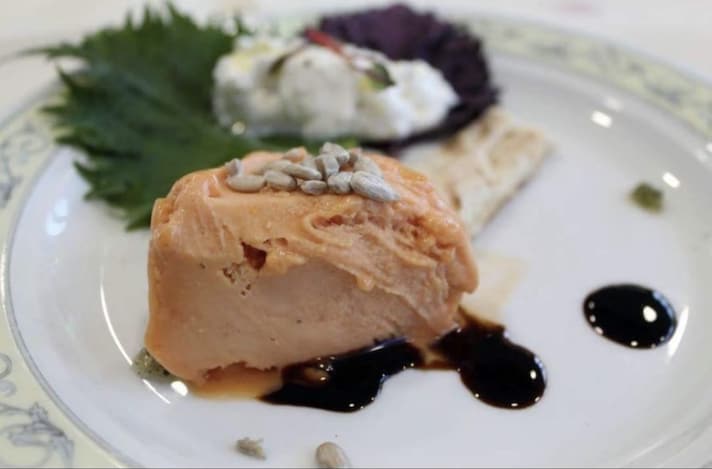
In her lab, flavors like salmon, extra virgin olive oil, marinated herring, salicornia, Piennolo tomato, and a variety of cheeses have taken shape. "My favorite? I'd almost definitely say the oyster leaf sorbet with caviar: that leaf captures all the flavor of the sea." According to Molitierno, an ingredient can be transformed into gelato in different ways, depending on what you use. "Vegetables," she explains, "are usually processed the same way as fruit. They're blended in water and sugar and then creamed. Cheeses, on the other hand, are first infused in a base of milk and sugar so that they can subsequently release their flavor and saltiness, then everything is blended and finally creamed."
;Resize,width=767;)
